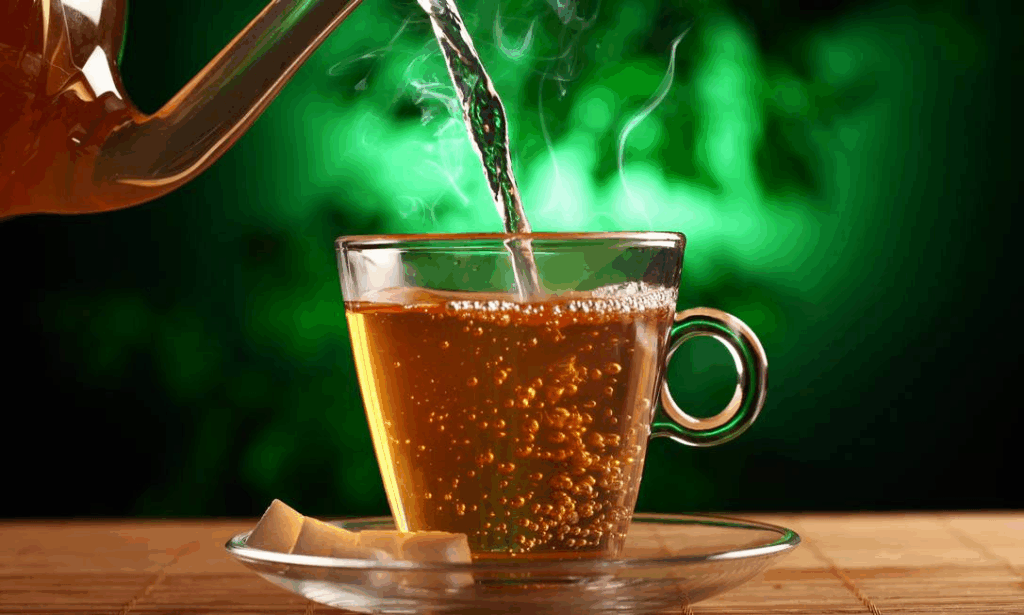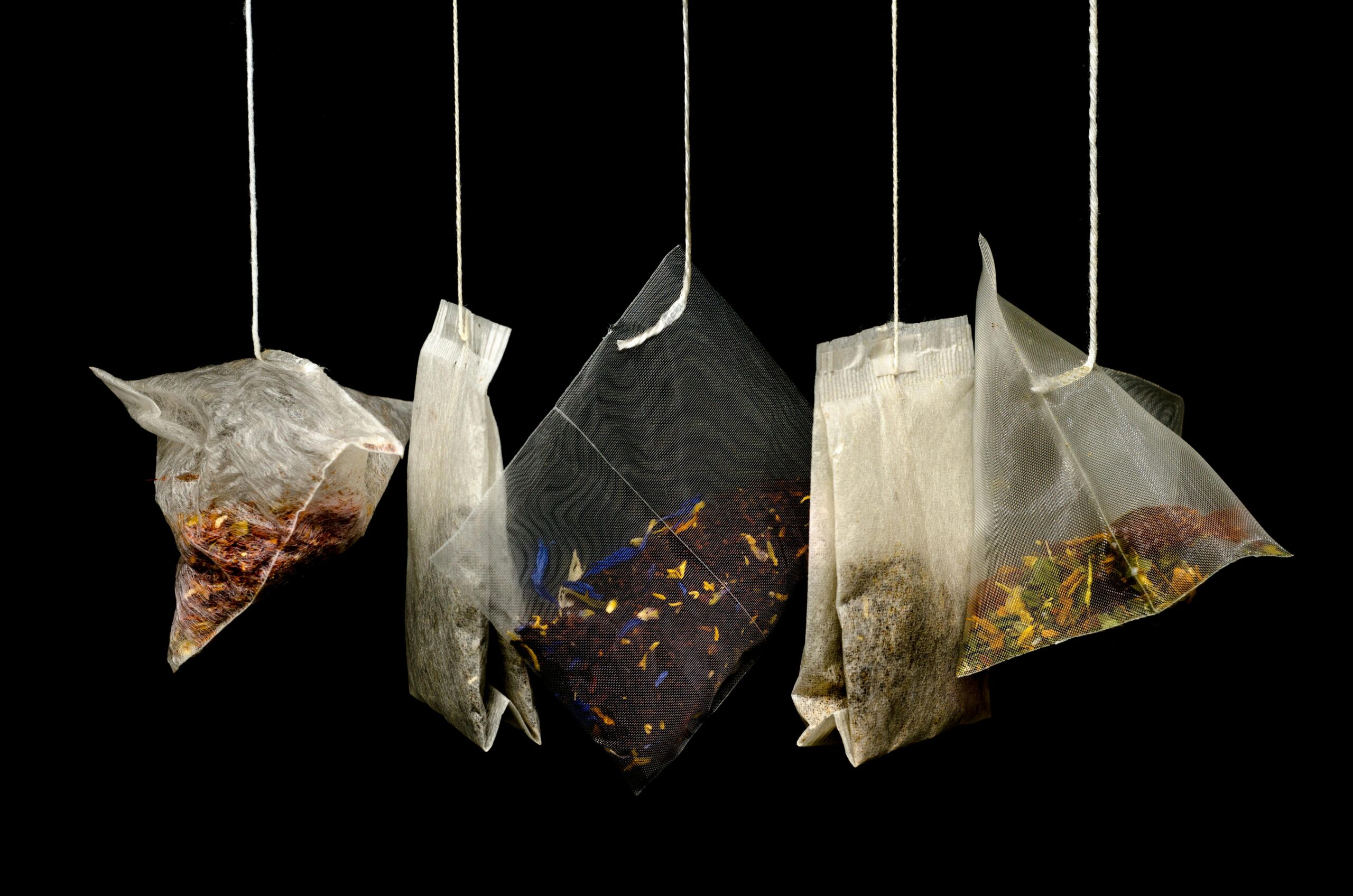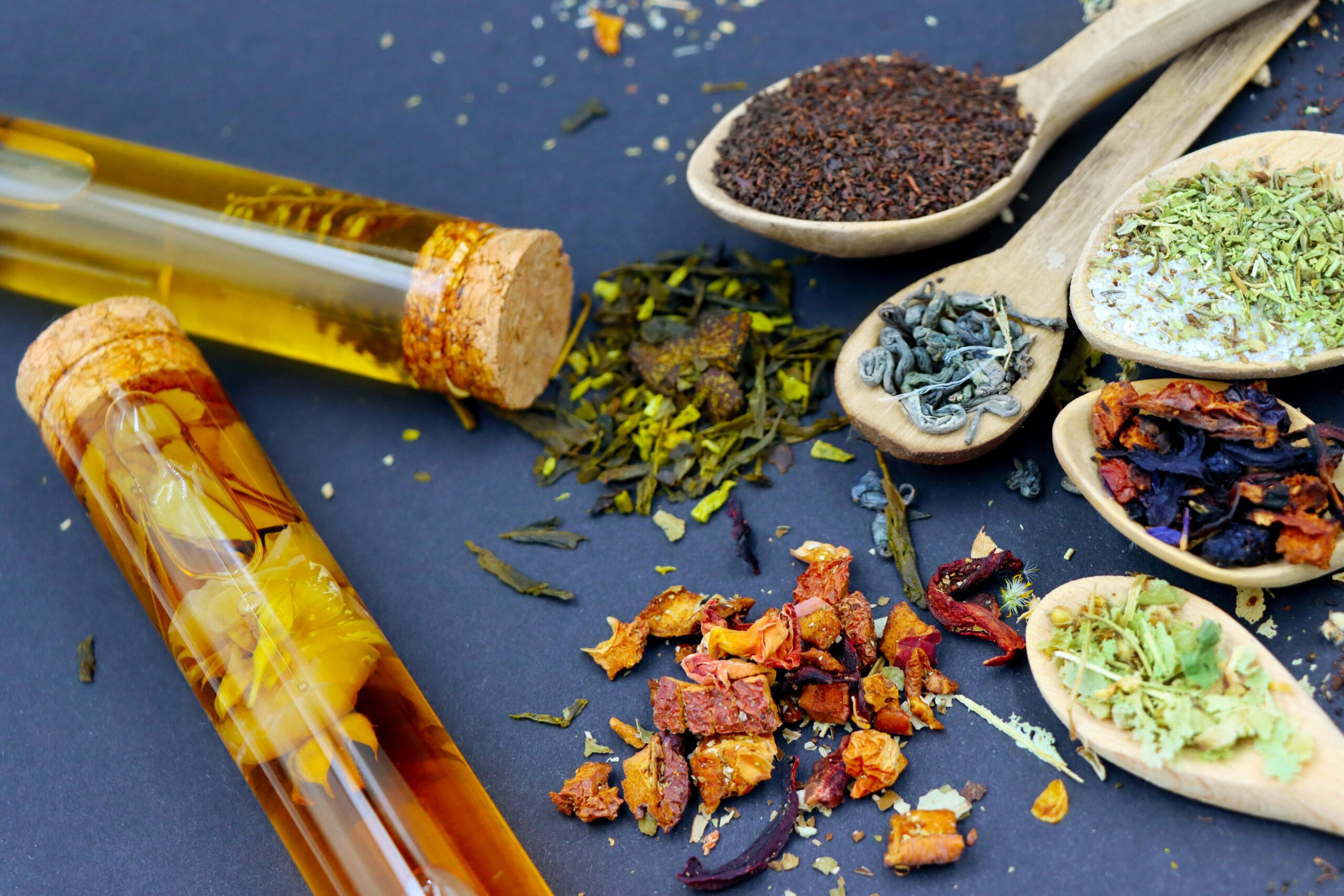Anúncios
Joint pain affects millions worldwide, prompting many to explore natural remedies alongside conventional treatments for comfortable, sustainable relief.
Whether you’re dealing with arthritis, inflammation from exercise, or age-related joint stiffness, the quest for effective management strategies often leads people to their kitchen cupboards. Herbal teas have been used for centuries across different cultures as gentle, warming remedies that may support joint health and overall wellbeing.
Anúncios
While teas aren’t miracle cures and should never replace professional medical advice, research suggests certain herbs contain compounds that may help reduce inflammation, ease discomfort, and support the body’s natural healing processes. Let’s explore some evidence-based options worth considering as part of a holistic approach to joint care.
🍵 Understanding How Herbal Teas May Support Joint Health
Before diving into specific teas, it’s helpful to understand the mechanisms through which herbs might influence joint comfort. Many herbal remedies contain bioactive compounds like polyphenols, flavonoids, and antioxidants that research has linked to anti-inflammatory effects.
Anúncios
Inflammation is a key contributor to joint pain, particularly in conditions like osteoarthritis and rheumatoid arthritis. When consumed regularly, certain herbs may help modulate the body’s inflammatory response, potentially reducing swelling and associated discomfort over time.
It’s important to note that herbal teas work gradually and gently. Unlike pharmaceutical interventions that provide rapid symptom relief, botanical remedies typically require consistent use over weeks or months to demonstrate noticeable benefits. Patience and realistic expectations are essential when incorporating these remedies into your wellness routine.
🌿 Green Tea: The Antioxidant Powerhouse
Green tea stands among the most researched beverages for health benefits, including potential support for joint health. Rich in catechins—particularly epigallocatechin-3-gallate (EGCG)—green tea has demonstrated anti-inflammatory and antioxidant properties in numerous studies.
Research published in arthritis-focused journals suggests that EGCG may help protect cartilage from degradation and reduce inflammatory markers in the body. While much of this research involves concentrated extracts rather than brewed tea, regular consumption of quality green tea may still offer meaningful support.
For best results, brew green tea at temperatures between 160-180°F (70-80°C) for 2-3 minutes. Steeping too long or using boiling water can create bitterness and may degrade some beneficial compounds. Aim for 2-3 cups daily as part of a balanced diet.
🧡 Turmeric Tea: Golden Anti-Inflammatory Support
Turmeric has earned considerable attention for its active compound curcumin, which demonstrates significant anti-inflammatory properties. Traditional Ayurvedic medicine has employed turmeric for joint-related conditions for thousands of years, and modern science is now validating many of these traditional uses.
Multiple clinical trials have examined curcumin’s effects on joint pain, with several showing improvements in pain levels and physical function comparable to some over-the-counter pain relievers, though with fewer side effects reported.
When making turmeric tea, add a pinch of black pepper, which contains piperine—a compound that enhances curcumin absorption by up to 2,000%. A small amount of healthy fat, like coconut milk or almond milk, also improves bioavailability since curcumin is fat-soluble.
A simple recipe: steep one teaspoon of turmeric powder in hot water for 10 minutes, then add black pepper, a touch of honey, and your preferred milk alternative. Many people find this warming beverage especially comforting during colder months or after physical activity.
🫖 Ginger Tea: Warming Relief from Within
Ginger root has been valued across Asian, Indian, and Middle Eastern medicine systems for its digestive and anti-inflammatory benefits. The active compounds in ginger, including gingerols and shogaols, have shown promise in research focused on joint discomfort.
Several studies examining ginger’s effects on osteoarthritis have reported modest but meaningful reductions in pain and improvements in mobility. One study found that ginger extract reduced knee pain in participants with osteoarthritis, though effects varied among individuals.
Fresh ginger tea tends to be more potent than tea bags containing dried, powdered ginger. To prepare: slice a 1-2 inch piece of fresh ginger root, simmer in water for 10-15 minutes, then strain. The longer you simmer, the stronger and spicier the brew becomes.
Ginger tea can be enjoyed throughout the day, though some people find it stimulating, so you may prefer to avoid it close to bedtime. Adding lemon juice not only enhances flavor but also provides additional antioxidant vitamin C.
🌺 Hibiscus Tea: Colorful Antioxidant Support
Vibrant hibiscus tea offers more than just a beautiful ruby color. This tart, cranberry-like beverage contains anthocyanins and other polyphenols that research suggests may help reduce systemic inflammation throughout the body.
While fewer studies have specifically examined hibiscus for joint pain compared to turmeric or ginger, its high antioxidant content supports overall cellular health and may indirectly benefit joint tissues by reducing oxidative stress.
Hibiscus tea is naturally caffeine-free, making it suitable for evening consumption. Steep dried hibiscus flowers in boiling water for 5-7 minutes for optimal flavor and compound extraction. The natural tartness pairs well with a small amount of honey or stevia if you prefer sweetness.
🍃 Willow Bark Tea: Nature’s Original Aspirin
Willow bark contains salicin, a compound that the body converts into salicylic acid—the active ingredient in aspirin. Traditional European and Native American herbalism has long used willow bark for pain relief, including joint-related discomfort.
Research suggests willow bark may help reduce pain and inflammation, though it works more slowly than synthetic aspirin. Because it contains natural salicylates, people who are allergic to aspirin or take blood-thinning medications should avoid willow bark tea.
Willow bark tea has a bitter, astringent taste that some find challenging. Starting with a weaker brew and gradually increasing strength can help your palate adjust. Combining it with more pleasant-tasting herbs like peppermint or lemon balm may improve palatability.
Due to its aspirin-like properties, it’s particularly important to consult a healthcare provider before using willow bark regularly, especially if you’re taking other medications or have underlying health conditions.
🌼 Chamomile Tea: Gentle Anti-Inflammatory Comfort
Known primarily as a calming bedtime beverage, chamomile also possesses anti-inflammatory properties that may benefit joint health. The flavonoids in chamomile, particularly apigenin, have demonstrated anti-inflammatory effects in laboratory studies.
While research specifically on chamomile and joint pain is limited, its general anti-inflammatory action and excellent safety profile make it a worthwhile addition to a joint-supportive tea routine. Plus, its stress-reducing effects may indirectly help, since stress can worsen pain perception.
Chamomile tea is extremely gentle and well-tolerated by most people. Steep one or two tea bags or a tablespoon of dried flowers in hot water for 5 minutes. The mild, slightly sweet, apple-like flavor makes it naturally pleasant without additions, though honey complements it beautifully.
🍀 Nettle Tea: Traditional Herbal Remedy
Stinging nettle (Urtica dioica) has a long history in traditional medicine for addressing inflammatory conditions, including joint pain. The leaves contain compounds that may interfere with inflammatory pathways in the body.
Some research suggests nettle may help reduce inflammation markers and that topical nettle applications might decrease pain in affected joints. While tea may be less potent than direct topical use, regular consumption might offer cumulative benefits.
Nettle tea has a grassy, slightly earthy flavor that grows on you with repeated exposure. Steep dried nettle leaves in hot water for 10 minutes to extract beneficial compounds. Many herbalists recommend nettle as a nourishing tonic that supports overall health when consumed regularly over time.
💚 Combining Herbs for Enhanced Benefits
One of the beauties of herbal tea is the ability to create blends that combine complementary properties. A joint-support blend might include ginger and turmeric for anti-inflammatory action, chamomile for soothing comfort, and a touch of peppermint for pleasant flavor.
When creating blends, start with small amounts of each herb and adjust ratios based on taste preferences and how your body responds. Some combinations enhance both flavor and effectiveness—turmeric and ginger, for example, work synergistically both in taste and potential benefits.
Pre-made herbal blends formulated for joint support are widely available from reputable tea companies. These often combine several of the herbs mentioned here with additional supportive botanicals like rosehip, boswellia, or cat’s claw.
⚖️ Realistic Expectations and Safety Considerations
It’s essential to approach herbal teas with balanced expectations. While research supports anti-inflammatory properties in many herbs, individual responses vary considerably. What provides noticeable relief for one person might have minimal effect for another.
Herbal teas are generally safe when consumed in normal amounts (2-4 cups daily), but they’re not without potential interactions or side effects. People taking medications, those with chronic health conditions, pregnant or nursing women, and anyone scheduled for surgery should consult healthcare providers before using medicinal herbs regularly.
Some herbs can interact with medications. For example, ginger and turmeric may enhance blood-thinning effects of anticoagulant medications. Green tea contains vitamin K, which can interfere with some blood thinners. Willow bark should not be combined with aspirin or NSAIDs.
Quality matters significantly with herbal products. Choose organic teas from reputable sources when possible to minimize pesticide exposure and ensure proper plant identification. Buying whole herbs and brewing them yourself often provides better quality than mass-market tea bags, though convenient options certainly have their place.
🎯 Integrating Tea into a Comprehensive Joint Care Strategy
Herbal teas work best as one component of a multi-faceted approach to joint health. No single intervention—herbal or pharmaceutical—addresses all aspects of joint pain management.
Regular, appropriate exercise remains one of the most effective strategies for maintaining joint function and reducing pain. Physical activity strengthens supporting muscles, maintains range of motion, and can reduce inflammation when done appropriately.
Maintaining a healthy weight reduces mechanical stress on weight-bearing joints like knees and hips. An anti-inflammatory diet rich in vegetables, fruits, whole grains, fatty fish, and healthy fats provides the building blocks your body needs for tissue repair and maintenance.
Adequate sleep, stress management, and staying hydrated all support overall health and may influence how you experience and cope with joint discomfort. Herbal teas can play a role in several of these areas—providing hydration, offering a calming ritual, and potentially contributing anti-inflammatory compounds.
📋 Creating Your Personal Tea Routine
Developing a consistent tea-drinking habit takes intention but needn’t be complicated. Start by selecting one or two teas that appeal to you based on taste and research. Commit to drinking them daily for at least a month before evaluating effectiveness.
Morning might be ideal for energizing green tea or invigorating ginger tea, while calming chamomile or caffeine-free hibiscus suit evening routines. Turmeric tea can fit anywhere in your day, perhaps as an afternoon treat or post-exercise recovery beverage.
Keep a simple journal noting your daily tea consumption alongside pain levels, stiffness, and mobility. After several weeks, patterns may emerge that help you identify which herbs, if any, provide noticeable benefits for your particular situation.
Remember that consistency matters more than perfection. Missing a day here and there won’t derail potential benefits, but sporadic use likely won’t provide the cumulative effects that regular consumption may offer.
🔬 The Current State of Research
While traditional use and preliminary research support many of these herbs, it’s honest to acknowledge that robust, large-scale clinical trials specifically examining herbal teas for joint pain are limited. Much existing research focuses on concentrated extracts rather than brewed teas, which contain lower concentrations of active compounds.
However, the general safety profile of these herbs, combined with their long history of traditional use and supporting laboratory research, makes them reasonable options to explore—particularly for people seeking gentler alternatives or complementary approaches to conventional treatments.
Research in herbal medicine continues to expand. As scientific interest grows, we’ll likely gain better understanding of optimal dosing, which compounds provide the most benefit, and which individuals might respond best to specific herbs.

🌟 Moving Forward with Herbal Support
Joint pain can significantly impact quality of life, but you have more options than ever for managing discomfort and supporting joint health. Herbal teas represent an accessible, affordable, and generally safe approach that may complement other strategies you’re using.
Whether you choose the antioxidant richness of green tea, the golden warmth of turmeric, the spicy kick of ginger, or the gentle comfort of chamomile, you’re connecting with healing traditions that span cultures and centuries. There’s something deeply satisfying about nurturing your body with plant-based remedies that have served humanity for generations.
Start simply, listen to your body, stay informed, and work collaboratively with healthcare providers to create a comprehensive approach that addresses your unique needs. The journey toward better joint health is often gradual, but each small, consistent step—including that daily cup of healing tea—contributes to the larger picture of wellbeing.
Your joints support you every day through countless movements. Taking time to support them in return, perhaps with a warm, comforting cup of herbal tea, is both practical self-care and a gentle act of self-compassion.






